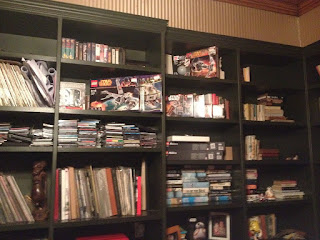Communities of Practise
Wenger (2000) defines a "Community of Practice" as a place where people share and reflect on their collective learning. From participating in these Communities of Practise they define with each other what is competence.
Jurasaite-Harbison and Rex (2010) highlighted that Communities of Practise occurs through informal learning via daily conversations, lesson reflections and other exchanges. Every day i have personal conversations with my collaborative teachers trying to make sense of the day before and how to make the most of the day ahead. I hover around the photocopier looking for resources I can adapt but I also speak to colleagues across teaching teams. I am looking for learning opportunities that may make a difference for the children in my class. I am not looking for a solution to a problem but rather another approach to what I am currently trying. Outside the school I am using the internet to follow blogs or I am using Google+ to connect with fellow teachers or people of interest. I now realise I have many communities of practise and they sometimes overlap.

The Three Domains
The three domains that define a Community of practice (COP), on the Wenger-Trayner website are Domain, Community and Practice.
Domain
I am interested in the use of Digital technology in Education, Mindfulness and Education resources which promote learning opportunities for varied learners.
Community
The staffroom is our community watering hole fellow teachers stand around the photocopier sharing resources, asking for advice or expertise. Fortunately we do not work in a vacuum we are constantly looking for help from experts in our local community or further afield. The Mind Lab course has helped widen my ICT expertise with the use of Digital and Collaborative Learning. I am able to share my experiences with colleagues which helps me reflect on my current practise.
Practice
In my Community of Practise, I am constantly reflecting on what is happening in my classroom and the interactions throughout the day. From discussing what has happened through the day with first my Co-teachers and then if required my team leader or others I can get a different perspective.
Having interactions with the MindLab Google+ community allows me to discuss themes and clarify any questions or understanding with educators from wider communities that may have different experiences with their community of learners.
In my school setting;
I am an ICT leader and I am part of an ICT team. Within this community I work with a colleague to gently offer ideas for using ICT more effectively.

After watching Etienne Wenger 'Walking the landscape of practise' I associated my Community of Practise as an analogy of me as a Meerkat. This year I have been bombarded with Professional Development in which I have had to participate in Communities of Mindfulness, Growth Mindset, and Character Traits. I really felt like a Meerkat at the top of a hill watching out for threats. As an educator I feel guarded against the potential fads of Education. As I slowly find out more about each Community of Practice I slowly lower my guard. I am not completely sold on all of them but I am willing to participate and reflect on the learning experiences that my learners and I are having.
References
Jurasaite-Harbison, E., & Rex, L. (2010). School Cultures as Contexts for Informal Teacher Learning. Teaching and Teacher Education, 26(2), 267-277.
OPENiPhotojournalism. (2009, Sep 15). Etienne Wenger talks about 'walking the landscape of practice'.[video file]. Retrieved from
https://www.youtube.com/watchv=qjw0YoqpEq8&feature=youtu.be&list=PLb5Ty6fTaPkWE
https://www.youtube.com/watchv=qjw0YoqpEq8&feature=youtu.be&list=PLb5Ty6fTaPkWE
Wenger, E.(2000). Communities of practice and social learning systems.Organization,7(2), 225-246

















